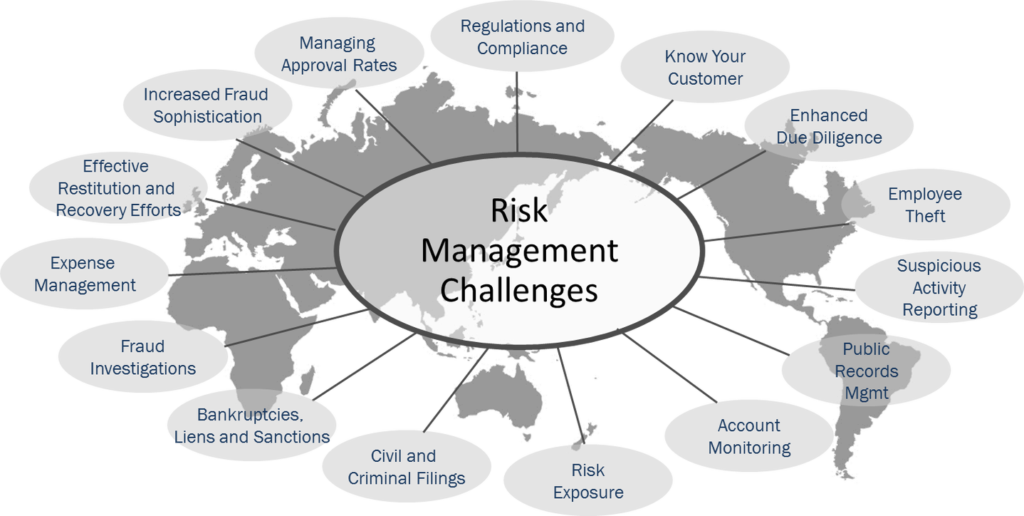Enterprise Risk Analytics: A Primer
3AI September 24, 2020

Uncertain times and a sinusoidal volatility in the economic climate has significantly contributed to an increased focus on organizational governance, risk, and compliance (GRC) across industries of all sizes. The rapid industrialization and technological advancements over the last decade or so has exposed some perennial systemic weaknesses that can arise from increasingly complex operating structures and also the governmental frameworks, procedures put in place to mediate the way markets work. Though a limited few organizations have been successfully able to counter risk and compliance challenges head on with insightful business strategies and powerful technology solutions, but yet a sizable population is struggling to reconcile traditional risk mitigation approaches and legacy systems with the ever-changing business landscape. The question still lingers on, how to empower business managers to make intelligent decisions that deliver value, rationalize costs and balance returns with associated risk appropriately?
If you close track, it’s evident that the Chief Risk Officers and Chief Financial Officers across the World are grappling with:
- Managing credit exposure and control
- Effective valuations
- Managing cost pressures
- Increase regulatory pressures
- Ensuring capital adequacy and minimize the solvency risks
- How to induce efficiencies in risk management operations
And organizations today are leaving no stone unturned to craft a Robust Risk Management Strategy with Analytics cutting across all the key facets:
- Assimilating different types of organizational risk data onto one common platform, providing a clear method for identifying, assessing, understanding and managing risks
- Empowering leaders to act on early-warning signs in a timely and coordinated fashion to keep any unprecedented risks at bay
- Deploying business relevant risk management procedures and controls outlined for proactive mitigation
- Enhanced forecasting and reporting mechanisms
- Highly interactive real-time dashboards for monitoring Key Performance Indicators (KPIs)
- Employing a consistent “risk intelligent” approach to decision making, a part of the organizational DNA cutting across functional silos
And if you see some of the key challenges globally, they are wide and varied

Traditionally most of these GRC programs have been running in siloes, inept to handle the varying complexity, dynamicity of the “modern era” regulatory and compliance environment, including governmental mandates, industry standards and policies. Till date, it was the purview of BU leaders to monitor, assess and report risks to their leadership teams. With the exponential data deluge and voluminous stacks of structured/unstructured risk-related data, no wonder it’s becoming nearly impossible for BU leaders to gather critical risk data, much less provide it in comprehensible and consumable form to CFOs and other CXO’s to make organizational risk decisions effectively.
As these mandates and compliance guidelines are becoming of grave importance for businesses today, it’s imperative for organizations to adopt a pragmatic approach and tightly weave in their risk-management initiatives/procedures with business-as-usual processes, be it internal or customer-facing. BI and advanced reporting techniques render a powerful platform for gaining a deep understanding of key factors driving organizational performance and compete effectively in a compliant manner.
Growing relevance of being compliant…
Organizations across the globe today, especially financial service firms, are well-versed with the use of risk analytics, primarily due to regulatory requirements and compliance issues. Regulatory pressure is driving Risk & Compliance investments across plethora of industries resulting in sudden surge in demand for Risk Analytics services globally:
- Basel compliance,, Frank Dodd, Fair Lending Act, CCAR
- Solvency Act, FATCA, FCRA, TILA etc
- HIPAA compliance and Healthcare reforms act
The BFSI segment has been the leading adopter of risk Analytics ages now. However, the adoption of risk analytics has now percolated to other sectors such as manufacturing, Consumer packaged goods, technology and media. In Banking & Financial Services space, a leading global financial services firm and one of the largest banking institutions in the United States is currently trying to meet large demand for analytics modelers for CCAR compliance. Another leading Wealth Management Services player on the other hand is embarking on large data management and regulatory reporting initiative, in response to FCA requirement. One of the largest financial services holding companies in the U.S. is in discussions for supporting its model monitoring initiative, to meet regulatory guidelines including CCAR. An American multinational financial services corporation has already participated in multimillion dollar deals and multi-year program for Basel compliance and is heavily investing in tool-based Model monitoring platform.
In Insurance arena, the leaders are now increasingly adopting risk analytics for gaining competitive edge, using predictive analytics techniques to identify and mitigate risk exposures. Some of the trending techniques being employed are CAT Risk modeling, Operational Risk Solutions (Fraud Mgmt.), Solvency II – Large opportunities for Operational and Solvency Risk analytics and also rationalized risk reporting opportunities.
The pharma & healthcare industry too, risk, governance and compliance services have seen a spiralling upward trend. SOX: Incentive/ Compensation for sales management, Pharma Co-Vigilance Analytics, Fraud Analytics, Claims Management Analytics (Pre-pay audits on health plan, federal mandates, claims archives etc). Some of the leading Healthcare payers/providers are in discussion for health risk analytics for managing revenue/cost driven by patient under management.
Unfortunately, the ability to measure, monitor, and manage the key risks to the business owners has proven to be mind boggling. The compounding risk management challenge, in tandem with stricter regulatory requirements and strong oversight with regard to risk management has put a BIG question mark on the face of businesses today.
Analytics to rescue…..
As per NASSCOM’s Risk and Procurement Analytics Report 2013, “global risk analytics market was seemingly expected to generate a top-line impact of close to $20-21 billion in 2013 (which includes hardware, software and IT services and analytics). IT services and analytics has the largest share of the market, contributing nearly 48-49% of the revenues generated. By 2020, risk analytics is expected to grow up to a $50 billion market”.
To mitigate risks, corporations are fast adopting risk modeling, taking the risk analytics initiatives to a different dimension altogether. Leveraging existing risk data, risk modelers create chart out numerous scenarios that with associated probabilities that may pan out in the near future. Harping big on such risk scenarios, organizations’ are putting game theory to use to anticipate the moves of fraudsters and preempt activities which may deem harmful to the business.
On the Credit Risk side you have increased usage of Application scorecards, Counterparty Risk Scorecards, Risk based Pricing, Credit Line Assignment, Behavior Scorecards, Credit Limit Optimization, Retention /Foreclosure Analysis, Loss Forecasting, PD/EAD/ LGD etc. Market Risk to a great extent can be allayed through Market data Analysis, Position Data Analysis (Trading/Portfolio), Sensitivity Modeling for Exposures, Liquidity Risk Analysis, Interest Rate Risk Analysis, Money Market Fund Sector Analysis, AML etc. The governance piece is being actively managed well through Solvency 2 framework, SOX, Rating Agency Impact analysis, Model Management, Portfolio Tracking, Portfolio Stress Testing, Risk Reserves Analysis.
Compliance, the scariest of them all, can employ analytics Risk & accounting compliance rules, Credit watch & history reports, Daily compliance dashboards, VaR & Risk Adjusted Rates, Issuer/Lender Concentration, Model Governance, AML models et al.
Collections Analytics on the other hand includes, Collections scorecards, Recovery scores, Delinquency Bucket Analytics et al and fraud analytics, a key are of concern for most of the insurers: Fraud Detection Analysis, Fraud Control & Monitoring and Phishing Analytics.






